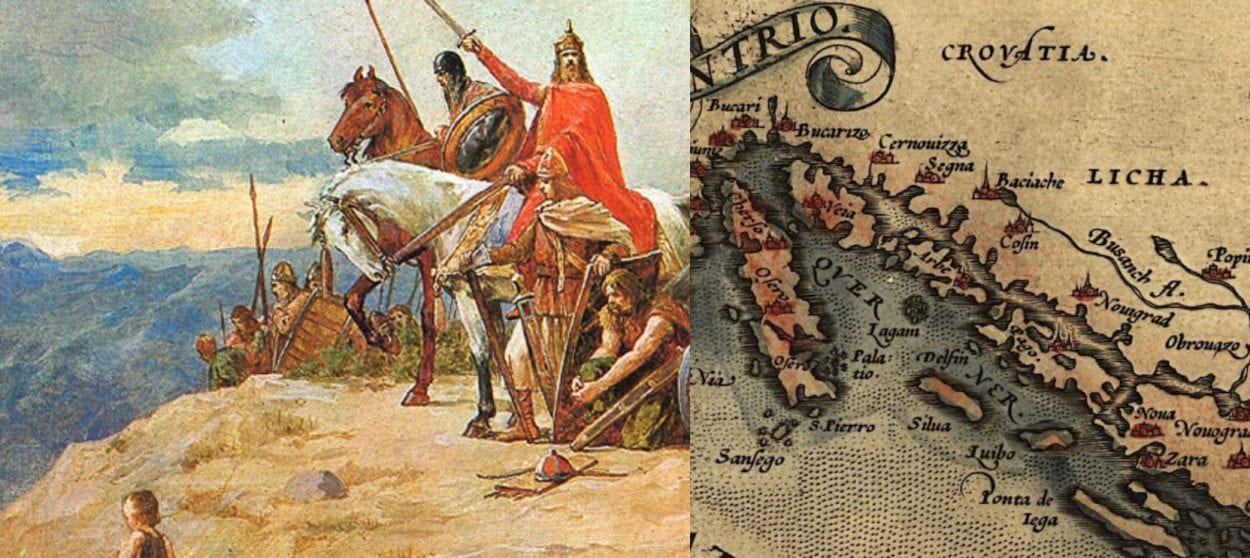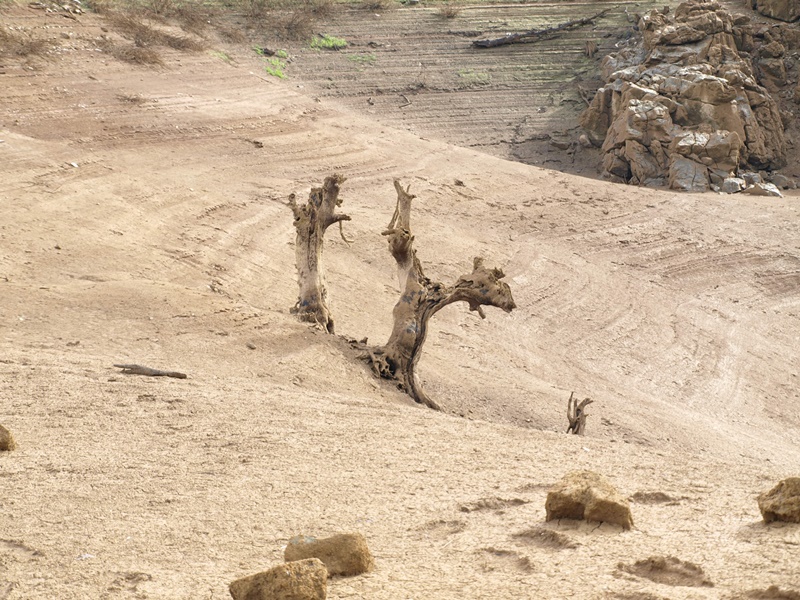Kosinj spreads along the river Lika in the picturesque Kosinj Valley, one of the most beautiful valleys in Croatia that you shouldn’t miss. That is the case today, but what was it like in the past?
Here are 5 INTERESTING FACTS about the Kosinj Valley you probably didn’t know:
1.Inhabited since prehistory
Archaeological findings indicate that the area of the Kosinj Valley was inhabited back in prehistoric and ancient times. In the pre-Roman and Roman era the Illirian Iapydes tribe lived in the region, and the most significant finding from that time is the so called „Inscribed Stone“ – a tall white stone with a Latin inscription. To this day the 2000 year-old inscription can still be read:
EX CONVENTIONE FINIS INTER ORTOPLINOS ET PARENTINOS ADITVS AD AQVAM VIVAM ORTOPLINIS PASVS D LATVS I.
This translates to:
„Per the agreement, the border between the Ortoplin and Parentin; approach to living water to the Ortoplin 500 steps, 1 width.“
What does this inscription in the middle of the forest mean? Who were the Ortoplin and Parentin? What is „living water“?
The Inscribed Stone was created in the 1st century, when the Romans assumed power over the Iapydes in Lika. The Ortoplin and Parentin were two neighbouring Iapydes tribe – nomad herders whose flock fed on the slopes of northern Velebit.
The „living water“ is the Begovača spring where the herders brought the animals to drink, and it was located near the Inscribed Stone. The Stone thus tells the story how the two neighbouring tribes had a conflict about using the source, and the Roman government, who believed it important to keep the peace in their newly conquered territory, stepped in to resolve it.
The Romans gathered representatives of the two tribes near the stone, deep in the forest, and a compromise was agreed upon before the Roman governor, granting the Ortoplin access to the water source. A Roman stone carver inscribed the decision into the stone so that it be visible to all and that no one may contest it. The Inscribed Stone is some sort of law, a proper legal document, and for two thousand years it has stood the test of time.
2. Kosinj and the legend of the arrival of the Croats
The name Kosinj can be found in the famous legend of the arrival of the Croats, written by the Byzantine emperor Constantine Porphyrogenitus in the 10th century.
The legend mentions five brothers (Klukas, Lobel, Kosjenc, Muhlo and Hrvat) and two sisters (Tuga and Buga), and their names have been preserved in the names of some settlements and families in Lika, including Kosinj – after the brother Kosjenc.
3. Old maps of Kosinj
The name Kosinj first appeared in 1461. Ever since the 15th century, Kosinj was an important religious and cultural centre, located on many traffic routes of the time.
Kosinj’s historical importance can also be seen by the fact that it was drawn over a hundred times on different European maps from the 16th to the 19th century.
4. First Croatian book
For Croatian culture and history, Kosinj is by far the most significant as the place where the first Croatian book was printed. Soon after the discovery of the printing press, the Frankopans founded the first Croatian printing house, which was also the first printing house in this part of Europe.
It is believed that the first book in Croatian and in the glagolic script – „Kosinjski misal“ – was printed in Kosinj in 1483. Additionally, an important part of the Kosinj glagolic heritage are the inscriptions in the Church of Saint Vitus in Kosinjski Bakovac.
5. Village in the depths of Kruščica
Lake Kruščica, located on the river Lika, is one of the most beautiful artificial lakes in Croatia, but it is not widely known that the depths of Kruščica conceal the remnants of a village bearing the same name and the church of Saint Elias.
Kruščica was once a village through which the river Lika flowed, and it was inhabited by around 60 agricultural families. The houses in the village were built from wood and stone and the village had a cemetary and a school. The village centre was home to Kruščica’s celestial protector, Saint Elias.
Life in the village stopped in 1912, when an engineer came to the village to inform people that the artificial lake would be built. In the early 1960s, all families received compensation and began relocating, while the altar of the church of St. Elias was moved to Aleksinica. After the inhabitants left their homes, Kruščica was covered by 80 million cubic meters of water in 1965. During summer, when the water is low, you can see the foundations and ruins of the church, houses, estates and roads. The ruins at the bottom of Kruščica continue to defy the power of water.
The lake is emptied every 10 years to check the state of the dam and repair any possible damage. It was last dried out in 2010, and when the water withdrew, the remains of the village appeared – dried and dead trees, the foundation and ruins of the church, derelict house walls, the remains of the old mill and millstones…
These impressive and slightly apocalyptic scenes from the bottom of the lake attracted many curious eyes, and the former inhabitants of Kruščica used the opportunity to see their drowned homes once more.
PHOTO: Wikimedia/ Croatian History


































